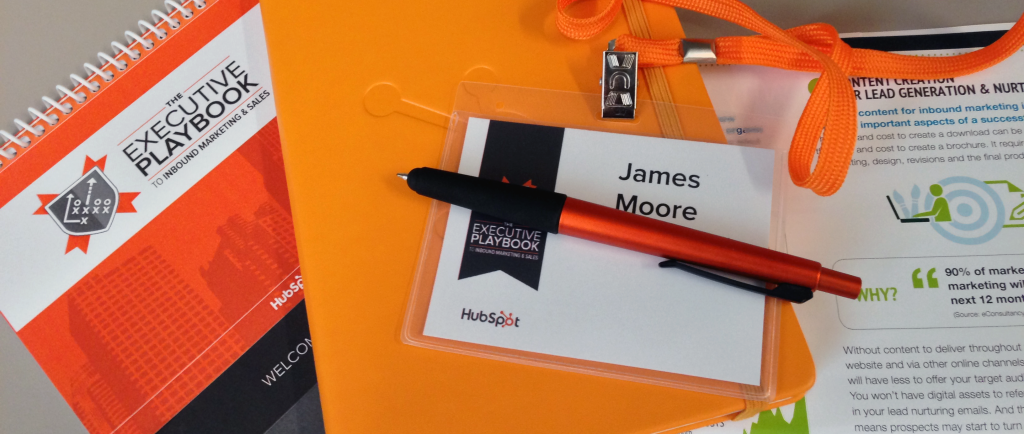
PDF versions of the presentations are available at http://offers.hubspot.com/playbook13
The four parts were:
1: Jessica Meher (Head of Enterprise Marketing at HubSpot) spoke about the lack of love in in marketing, and how to address this. The key takeaway here (and something I have felt for a while) is that traditional interruptive marketing methods are no longer appropriate, and the smarter way to engage with prospects (and ultimately customers) is to be a resource that people want to find and use. The line used was:
Don’t interrupt what people want to consume. Be what they want to consume.
2: Phill Harrell (VP of Enterprise Sales at HubSpot) focused on the tension between Marketing and Sales, and suggested “Smarketing” as a five-stage solution in which both teams cooperated with common goals and understanding:
- Building a Smarketing Organization.
- Agreement on Terminology.
- Implement a SLA.
- Manage Smarketing.
- Establish Inbound And Outbound Teams.
However, I think one of the fundamental reasons why HubSpot has been able to achieve this close collaboration is that this design was built into the company from the beginning, with automated reporting functionality. This data supports the close collaboration and helps resolve disputes and differences.
3: John McTigue (Kuno Creative‘s Executive Vice President and Co-Owner) detailed a very interesting case study in which a $100,000 investment resulted in over $400,000 sales two months later. He noted that stock photography did not work as well as showing actual images and real people.
4: Erin Wasson (UrbanBound‘s VP of Marketing) shared her experience of creating content for inbound marketing. Her slides are not available online, but the key takeaway of her segment was that:
Create personas! They really work!
and:
Selling through education’ vs. PPC
HubSpot has a follow-up conference in Boston in August. I won’t be there for that, but wish I could be.